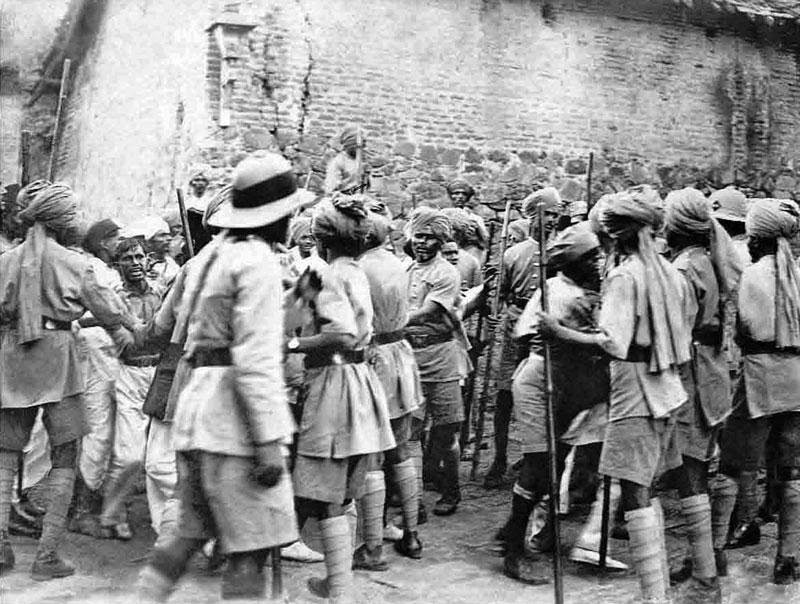Pajhota Movement-1942

Pajhota Movement took place in the Sirmaur Princely State of Himachal Pradesh in the year -1942. Rajendra Prakash was the Maharaja of Sirmaur princely state of Himachal Pradesh during the Pajhota movement. Nokarshahi was ruled by the princely state. During World War II: In order to help the British, the king started forcibly recruiting the people from the subjects. Farmers were not free to sell crops in the open market and many kinds of taxes were also imposed and the conditions of peasants of the princely state was in bad shape.
Formation of Pajhota Kisaan Sabha for Pajhota Movement
The main leader of the Pajhota Movement was Vaid Surat Singh and his wife Sunhari Devi. In October, 1942, the persecuted and conscious farmers of Pazhota established a Kisan Sabha in Jadol-Taproli in the princely state of Sirmaur. Executive Members of the House Laxmi Singh Pradhan, Gulab Singh in Taproli, Chunchu Mian of Jadol, Mehar Singh, Madan Singh, Antar Singh of Pan Kuffar, Vaid Surat Singh of Katogada, Jalam Singh of Baghol, Kahi Ram of Leu, Kali Ram of Neri and Padam was Rama.
Vaid Surat Ram was made the secretary of the Kisan Sabha. All the members of the assembly took an oath to fulfill the responsibility of making salt water out of the water lot. The Kisan Sabha also started the Non-Cooperation Movement and Satyagraha started the armed movement in protest of the bribery and dictatorship of the king’s employees.
Demands of peasants in Pajhota Movement
In the Pazhota movement, the Kisan Sabha asked the princely government of Sirmour:
• End of forced labor practice.
• Construction of new schools and post offices etc.
• Unlicensed arms possession.
• Termination of women’s customs.
• Open trade law of potato crop.
• Transfer of corrupt employees.
• Establish a cabinet elected by the subjects.
In the Pazhota movement, the farmers of Pajhota demanded that the king himself come to this area and listen to the problems and demands of the people, but the ruler of Sirmaur was an unskilled and relaxed person. The princely government sent DSP and other soldiers in December 1942 to suppress the movement.
Military action on Pajhota Movement
The activist movements did not allow the government officials to work and the members of the Kisan Sabha, among whom Chunchun Mian, Madan Singh, Vaid Surat Singh, Gulab Singh, Meher Singh, Ram Das, etc. were the main ones, motivated the people to agitate against the government. . The government gave the name of the ring leaders to the chief, secretary and executive members of the Kisan Sabha (Pazhota movement) and they were summoned to the king’s court for understanding but the leaders called the court to consider the conspiracy to arrest and attend the court Refused.
ALSO READ- क्या था धामी गोली काण्ड, जाने काल कोठरी की घटना
On May 1943, the princely government sent troops under the leadership of Major HS Bam and Section 144 was implemented in the Rajgad area and issued orders for ‘ring leaders’ to surrender to the army within 24 hours. But nothing came out of it. That is why martial law was implemented in the entire region.
On May 14, 1943, the army and police conducted raids across the region and looted people’s property and burnt grain stocks. On 11 June 1943, the soldiers set fire to the agitating Kali Ram’s house in Koti-mamwaga and when the villagers arrived to extinguish the fire, the soldiers opened fire on the unarmed people.
In this firing incident, Katogada’s Kamna Ram was martyred and some others were also injured in this firing. A total of 26 tramps were fired in this act by soldiers to suppress the Pajhota Movement.
The other 69 agitating farmers were captured from other places and kept in Nahan jail and their associates and family members were also harassed. The fine was arbitrarily recovered and the Pajhota movement was crushed on the strength of the police and Army power.
Therefore, it can be said that the Pajhota Movement was also an important movement against the oppressive policies of the British by the common people of the Sirmore princely state of Himachal Pradesh, which was on the lines of Quit India movement.
HPGK MOCK TEST, GK MOCK TEST. MODERN INDIAN HISTORY MOCK TEST

Good information